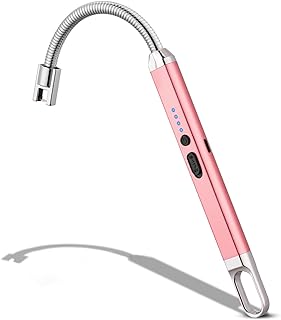The Anatomy of a Lighter: Understanding Its Essential Components
A lighter, seemingly simple, is a marvel of engineering that harnesses the power of fire. Here's a breakdown of its essential components:
1. Fuel Source:
* Butane: Most common fuel for lighters. Highly flammable, readily available, and produces a clean flame.
* Propane: Less common but offers longer burn times and better performance in cold weather.
* Naphtha: Used in some older lighters, but less common due to its strong odor and potential for leakage.
2. Fuel Reservoir:
* Container: Holds the fuel, often made of metal or plastic.
* Valve: Controls the flow of fuel to the burner.
* Filler Valve: Allows refilling of the fuel reservoir.
* Pressure Gauge: (Some lighters) Indicates fuel level.
3. Ignition System:
* Flint: Creates sparks to ignite the fuel.
* Wheel: Strikes the flint to produce sparks.
* Spark Generator: (Some lighters) Uses piezoelectric crystals to generate electricity for ignition.
4. Burner:
* Jet: Directs the flow of fuel to the flame.
* Flame Adjustment: Regulates the size and intensity of the flame.
* Flame Shield: (Some lighters) Protects the flame from wind.
5. Housing:
* Body: Encloses the components and provides a protective shell.
* Button: Triggers the ignition system.
* Windscreen: (Some lighters) Protects the flame from wind.
6. Other Components:
* Safety Features: Prevents accidental ignition.
* O-Rings: Seal the fuel reservoir to prevent leakage.
* Wick: (Some lighters) Absorbs fuel for flame production.
Types of Lighters:
* Butane Lighters: Most common type, using butane as fuel.
* Disposable Lighters: Single-use, designed for convenience.
* Refillable Lighters: Can be refilled with fuel.
* Zippo Lighters: Iconic lighters with a distinctive design and refillable fuel.
* Torch Lighters: Produce a powerful, concentrated flame.
* Electric Lighters: Use a battery to ignite the fuel.
Understanding the Components:
* The fuel source is the heart of a lighter, providing the energy for ignition.
* The ignition system triggers the fuel combustion, creating the flame.
* The burner directs the fuel flow and regulates flame size.
* The housing protects the components and provides a convenient grip.
Safety Precautions:
* Keep lighters away from children.
* Store lighters in a cool, dry place.
* Do not refill lighters near an open flame.
* Dispose of empty lighters properly.
Understanding the anatomy of a lighter allows us to appreciate its functionality and handle it responsibly. From the fuel source to the ignition system, each component plays a vital role in creating the essential element of fire.


